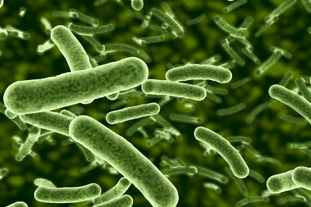
SOIL MICRO-ORGANISMS
These organisms are responsible for many of the vital functions that soil can provide to your crops. By understanding their role in soil health we can ensure they are providing their full range of benefits. At SoilScopes we do soil tests of these microbes to determine the health of your soil. If you are looking for more in-depth information on them you will find that all in my E-Book, " a Guide to Living Soil and composting."
The Soil Food Web
The interconnected relationship of micro-organisms that inhabit the soil to support healthy plants. These organisms need to be present and active in the right balance for the crops you are wanting to grow. If these organisms are not active within our system you do not have living soil and cannot see the benefits provided by these microbes. By having the right balance between your fungi and bacteria you can tailor the soil to the crop you are aiming to grow. Speak to our team about testing your soils to quantify what the microbiome on your soil looks like.

Bacteria
Firstly, we have our bacteria, a kingdom of life which was existed for 3.5 billion years. There are many different bacteria that have evolved with such a large community, how do we know which genus of bacterium we need? The answer is simple, the plant will know. Since the first evolution of plants, they have been interacting with the microbes beneath their roots. With the specific root exudates that are released, we find specific genera of bacteria that develop, we say the plant is selecting for the microbes it requires. This means we apply a wide diversity of bacteria that have been through a composting cycle to eliminate the non-beneficial species. By ensuring bacteria are present in highly diverse numbers we know that there is the start of nutrient cycling. Bacteria break down the material in the soil to store it within their bodies. To release the minerals within their bodies these bacteria need to be eaten and excreted, something we'll speak about.

Fungi
Next up is fungi and we aren't only talking about mushrooms here. Mushrooms-producing fungi only make up around 10% of the fungal kingdom and many other species are at work in the soil. The fungi we want to see in soils have massive benefits such as; mining minerals, creating good soil structure, better air exchange and water retention are improved. Specialised fungi known as Mycorrhizal fungi will form a symbiotic relationship with the root system of the plant, this enhances the potential of the plant in a great number of ways. We will actively inoculate our land to provide those benefits by creating environments for the fungi to thrive. Fungi are like bacteria in their function for our soil, they mine and store minerals that are released when they are consumed. The first two organisms can achieve this harvesting of minerals because of their specialised enzymes which help to break and store the nutrients within their bodies. We want to release those nutrients and feed them to our plants so let's talk about microscopic soil predators.

Protozoa
Protozoa, their function in the soil is to consume bacteria which are a highly concentrated food source. Once these bacteria are consumed the excess is excreted by the Protozoa. It is this that drives nutrient cycling because the excretion is in a plant-available form, this means the bacteria and protozoan have converted the mineral element from a non-plant-available form into a form that is perfectly suited for plant uptake. This process is sometimes known as the poop loop because the plants are feeding on the excess minerals that are released from the protozoa poop. A protozoan that many people have heard of before would be something like an Amoeba which oozes around in the soil eating bacteria and releasing valuable nutrients. These organisms are highly beneficial to soils and without them, we do not have active living soil.

Nematodes
The next level of the soil food web would be a creature known as a Nematode. These are essential microscopic predator worms that provide the same function as the Protozoa, they eat fungi and bacteria and poop out plant food. Nematodes fall into two main groups beneficial: which eat bacteria, fungi and other nematodes and detrimental nematodes which feed on roots. Beneficial nematodes provide high levels of nutrient cycling as they release nutrients stored within their prey. Detrimental species of nematodes are nasty pests but can ruin crops. The best way they are managed is by introducing dominant predatory nematodes which good soils will have in high numbers. We must ensure the soil oxygen levels stay high enough for the predator nematodes to take care of the root-feeding nematodes. Nematodes are some of our higher-level predators and when we see the right groups of them it is a good indicator of soil health.

Macro-arthropods
Other vital soil organisms are visible to the naked eye and are much more familiar. Earthworms, springtails, isopods along with many other arthropods. The function is similar to their microscopic counterparts which is to break up organic matter in soil that can support the plant. We are talking about a living ecosystem in soils that supports healthy plants that in turn provide food energy from the sun to everyone on this planet. It is a pretty important system, to say the least.

.png)